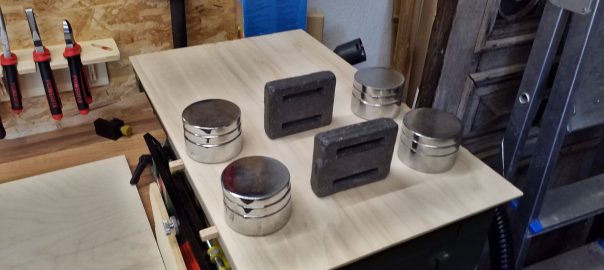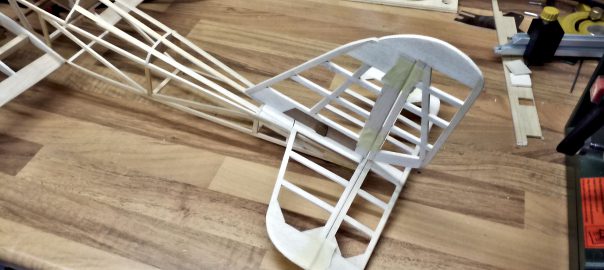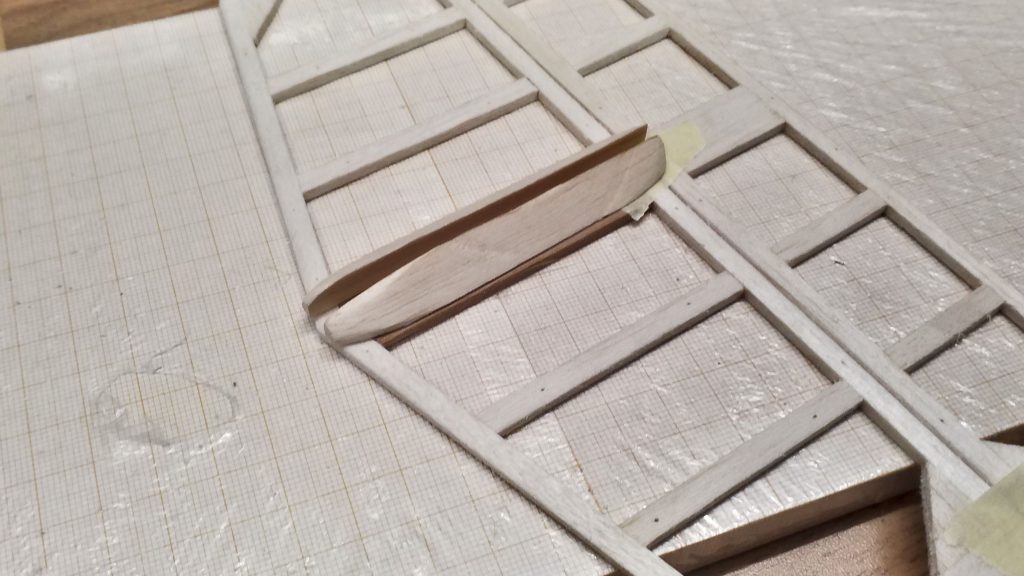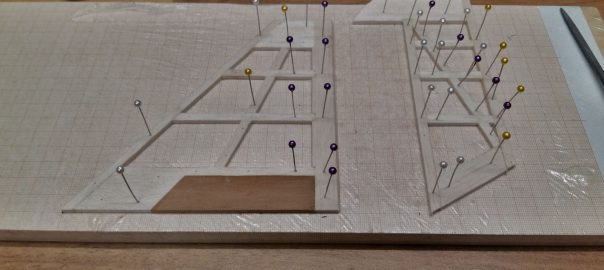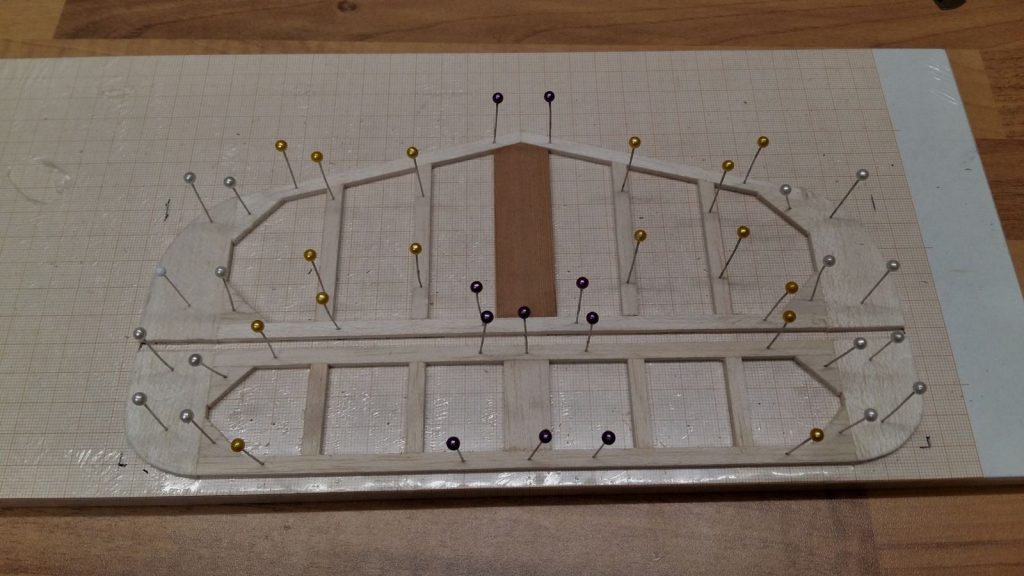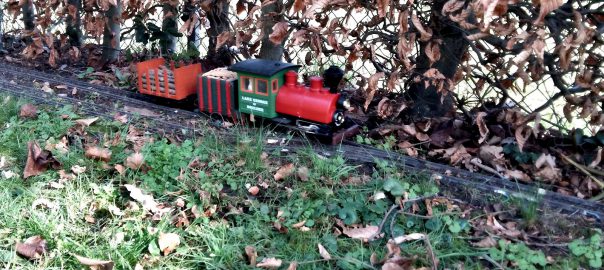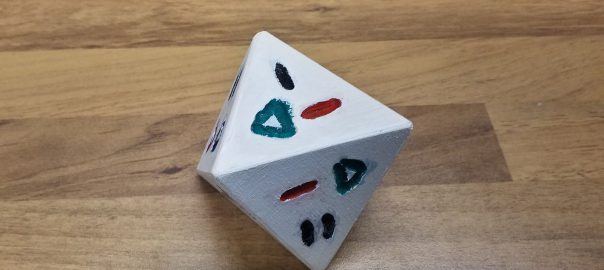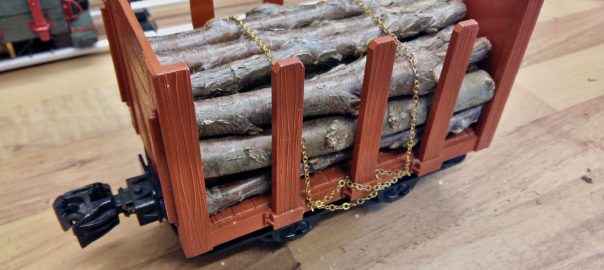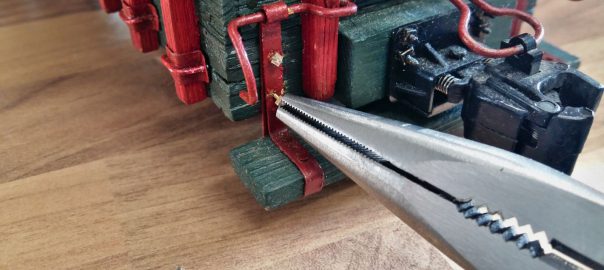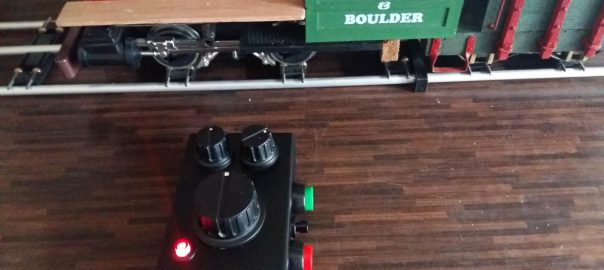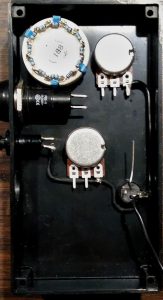As I mentioned in the construction report, I made a mistake while building the vertical stabilizer for my biplane, namely not chafing the trailing edge. Attempting to correct this using the transverse stop thoroughly failed. In order not to have to repeat this experience, I’m building a cross cut sled for the circular table saw.
However, a cross cut sled is capable of many more things. For once it facilitates to repeatively cut slats to length, thus one can skimp on a mitre saw. And then one can use it to get small boards back to right angles which were cut crookedly, so they can be rip cut again. So today is about the first part of a mini project which will facilitate my other handicraft.

